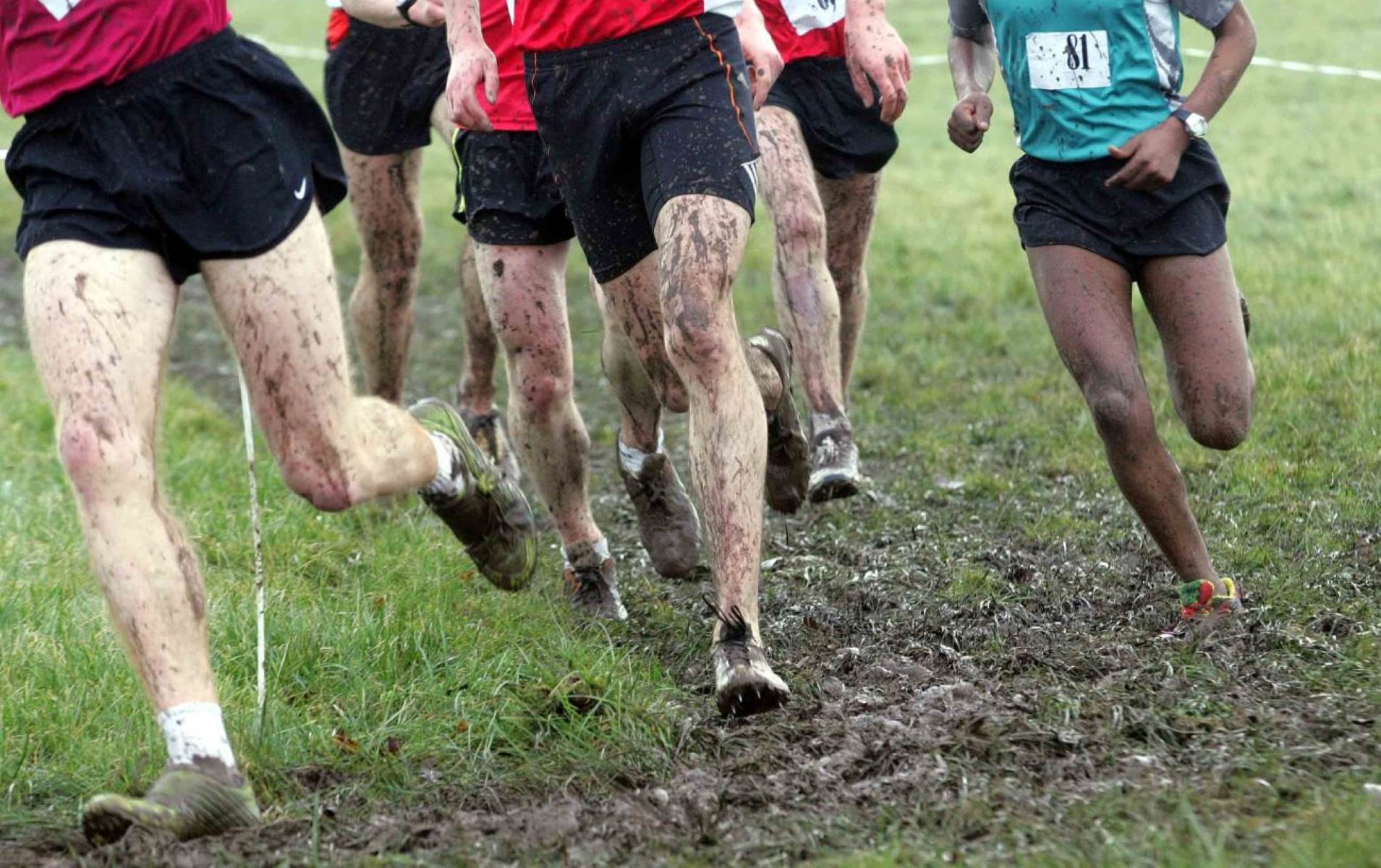Home>Misc>Featured>How Long Does It Take For Muscles To Repair After Workout


Featured
How Long Does It Take For Muscles To Repair After Workout
Modified: August 19, 2023
Discover how long it takes for muscles to repair after a workout in this featured guide. Enhance your understanding of post-workout recovery.
Introduction
When it comes to fitness and exercise, one of the key aspects to consider is muscle repair and recovery. After an intense workout, your muscles go through a process of damage and repair, leading to muscle growth and strength development. Understanding how long it takes for muscles to repair after a workout is essential for planning your training program and optimizing your results.
During a workout, your muscles undergo microscopic tears and damage, which triggers the repair process. This repair process involves the synthesis of new muscle proteins, increased blood flow to the affected area, and removal of waste products. It is during this repair phase that your muscles adapt and grow stronger.
However, the time it takes for muscles to repair can vary depending on several factors. Age, intensity and duration of the workout, nutrition, rest, and individual differences all play a role in the muscle repair process. By understanding these factors and implementing strategies to enhance muscle recovery, you can maximize your gains and minimize the risk of injury.
In this article, we will delve into the science behind muscle repair and recovery, explore the factors that influence muscle repair time, and discuss strategies you can implement to enhance the process. We will also touch upon the importance of proper nutrition, rest, and sleep, as well as the role of stretching and foam rolling in promoting muscle repair. Lastly, we will discuss how to manage muscle soreness and avoid overtraining, ensuring that you achieve optimal results while maintaining a healthy training routine.
Whether you are a professional athlete, a fitness enthusiast, or someone new to exercise, understanding the timeline and processes involved in muscle repair is crucial for achieving your fitness goals. So, let’s dive in and discover how long it takes for muscles to repair after a workout and how you can maximize your muscle recovery to reach your full potential.
Understanding Muscle Repair and Recovery
Muscle repair and recovery is a complex process that occurs after intense physical exercise. When you engage in activities such as weightlifting, running, or HIIT workouts, your muscles undergo stress and strain. This leads to the breakdown of muscle fibers, resulting in microscopic tears and damage.
After a workout, your body initiates the muscle repair process to rebuild and strengthen these damaged muscle fibers. This repair process involves various biological mechanisms that work together to facilitate muscle recovery and growth.
One of the key components of muscle repair is protein synthesis. Protein synthesis is the process by which new proteins are created in the body. In the context of muscle repair, protein synthesis is essential for building and repairing muscle tissues. It involves the production of new muscle proteins, which contribute to muscle growth and strength development.
Increased blood flow is another crucial aspect of muscle repair and recovery. When you exercise, blood flow to the muscles increases, delivering oxygen and essential nutrients needed for repair. The enhanced blood flow also aids in the removal of waste products, such as lactic acid, which can cause muscle soreness and fatigue.
In addition to protein synthesis and increased blood flow, the muscle repair process relies on the activation of satellite cells. Satellite cells are small, specialized cells located on the surface of muscle fibers. They play a fundamental role in muscle repair as they contribute to the formation of new muscle fibers and the regeneration of damaged muscle tissue.
Moreover, inflammation is a natural part of the muscle repair process. When your muscles are damaged, the body triggers an inflammatory response to remove cellular debris and initiate the repair process. Although inflammation is necessary for muscle repair, excessive inflammation can lead to prolonged recovery times and increased muscle soreness.
Understanding the intricacies of muscle repair and recovery can help you optimize your training program. By giving your muscles enough time to repair and allowing for proper recovery, you can ensure that you’re making gains and reducing the risk of overtraining and injury. In the following sections, we will explore the factors that influence muscle repair time and discuss effective strategies to enhance the muscle recovery process.
Factors Affecting Muscle Repair Time
The time it takes for muscles to repair after a workout can vary greatly depending on several factors. Understanding these factors is crucial for managing your training and optimizing your muscle recovery. Let’s take a closer look at the key factors that influence muscle repair time:
- Intensity and Duration of the Workout: The intensity and duration of your workout play a significant role in determining the extent of muscle damage and, subsequently, the time required for repair. High-intensity workouts or prolonged sessions can cause more muscle fiber damage, resulting in a longer recovery period.
- Nutrition: Proper nutrition is essential for muscle repair and recovery. Consuming an adequate amount of protein and other nutrients helps fuel the repair process and supports the synthesis of new muscle proteins. Additionally, post-workout nutrition, such as consuming a protein-rich meal or a protein shake, can facilitate faster muscle repair.
- Rest and Sleep: Giving your muscles sufficient time to rest and recover is crucial for efficient repair. During rest, the body can focus its resources on repairing damaged muscle fibers. Getting enough quality sleep is also important, as sleep is when the body undergoes significant repair and growth processes.
- Age: Age can affect muscle repair time. As we age, the body’s ability to repair and regenerate muscle tissues may decrease. This means that older individuals may require longer recovery periods compared to younger individuals.
- Individual Differences: Each individual is unique, and factors such as genetics, overall fitness level, and previous muscle conditioning can affect muscle repair time. Some people naturally recover more quickly, while others may require more time to fully repair their muscles.
It’s important to note that while these factors play a significant role, muscle repair time can also be influenced by other external factors, such as stress levels, injury history, and overall health. It’s crucial to listen to your body and adjust your training and recovery strategies accordingly.
By understanding these factors and their impact on muscle repair time, you can make informed decisions about your training routine. Implementing appropriate rest periods, optimizing your nutrition, and considering individual factors can help enhance your muscle recovery process and minimize the risk of overtraining and injury.
Typical Timeline for Muscle Repair
The timeline for muscle repair can vary from person to person and depends on various factors. While specific timelines for muscle repair can be challenging to determine due to individual differences, there is a general timeline that can serve as a guideline. Keep in mind that this timeline is not absolute, and individual experiences may vary.
Immediately after a workout, your body begins the process of muscle repair. During this initial phase, which lasts approximately 24 to 48 hours, your muscles experience increased blood flow and inflammation. This inflammation is a natural response to the damage caused during exercise and helps initiate the repair process.
Within the first few days after your workout, protein synthesis and cellular repair are at their peak. The body synthesizes new muscle proteins to replace the damaged ones and starts rebuilding the muscle fibers. During this time, it’s crucial to provide your body with adequate nutrition, particularly protein, to support muscle repair and growth.
After the first few days, the repair process continues, but at a slower rate. Depending on the extent of muscle damage and the individual’s factors, this phase can last anywhere from a few days to several weeks. It’s important to note that during this phase, muscles may still be recovering, even if you no longer feel sore. Pushing yourself too hard during this phase without proper recovery can lead to overtraining and hinder muscle repair.
Around two to three weeks after a workout, the majority of the repair process is typically complete. Muscle fibers have been rebuilt and strengthened, and the body continues to adapt and improve. However, it’s important to note that the remodeling and strengthening process can continue for several weeks or even months, depending on the individual and their training program.
It’s crucial to listen to your body throughout the muscle repair timeline. If you still feel excessively sore or fatigued, it may be a sign that your muscles need more time to repair. On the other hand, if you feel back to normal after a few days, it could mean that your muscles have repaired efficiently.
Remember, the timeline mentioned above is a general guideline, and individual experiences may vary. Factors such as the intensity and duration of the workout, nutrition, rest, and individual differences can influence the actual timeline for muscle repair. It’s crucial to pay attention to your body’s signals and adjust your training and recovery strategies accordingly.
Strategies to Enhance Muscle Recovery
Enhancing muscle recovery is essential for maximizing the benefits of your workouts and minimizing the risk of injury. By implementing effective strategies, you can optimize the muscle repair process and achieve better results. Here are some strategies to enhance muscle recovery:
- Proper Nutrition: Consuming a balanced diet rich in protein, carbohydrates, and healthy fats is crucial for muscle recovery. Protein provides the building blocks for muscle repair, while carbohydrates replenish glycogen stores and provide energy for workouts. Including foods such as lean meats, fish, whole grains, fruits, and vegetables can support the muscle repair process.
- Hydration: Staying hydrated is vital for optimal muscle recovery. Water helps transport nutrients to the muscles and aids in the removal of waste products. Aim to drink enough water throughout the day, especially before, during, and after your workouts.
- Active Recovery: Engaging in light exercise or low-impact activities on rest days can promote blood flow and enhance the recovery process. Activities like walking, swimming, or yoga can help reduce muscle stiffness and soreness while facilitating muscle repair.
- Stretching and Foam Rolling: Including stretching and foam rolling exercises in your post-workout routine can help alleviate muscle tension and improve flexibility. These activities promote blood flow, reduce muscle soreness, and enhance the recovery process.
- Rest and Sleep: Giving your muscles adequate time to rest and recover is crucial for optimal muscle repair. Incorporate rest days into your training schedule and aim to get enough quality sleep each night. Sleep is when the body carries out essential repair and growth processes.
- Cold Therapy: Cold therapy, such as ice baths or cold showers, can help reduce inflammation and muscle soreness. Applying cold to the muscles immediately after a workout can aid in the recovery process by decreasing swelling and promoting faster healing.
- Listen to Your Body: Pay attention to any signs of overtraining or excessive fatigue. If your body is telling you to take a break, listen to it and give yourself sufficient time to recover. Pushing through excessive fatigue can lead to decreased performance and increased risk of injury.
Implementing these strategies in your training routine can help enhance muscle recovery and optimize your overall performance. It’s important to note that everyone’s body is unique, so it may take some trial and error to find the strategies that work best for you. By prioritizing proper nutrition, rest, and active recovery, you can support your muscles’ repair process and achieve better results in your fitness journey.
Diet for Faster Muscle Repair
A proper diet plays a crucial role in promoting faster muscle repair and recovery. Providing your body with the right nutrients before and after a workout can help support the repair process and optimize muscle growth. Here are some dietary recommendations to aid in faster muscle repair:
- Protein: Protein is the building block of muscle tissue and is essential for muscle repair and growth. Include high-quality protein sources in your diet such as lean meats, poultry, fish, eggs, dairy products, legumes, and tofu. Aim to consume an adequate amount of protein in each meal to support the repair and synthesis of muscle proteins.
- Carbohydrates: Carbohydrates provide your body with energy, replenish glycogen stores, and support muscle recovery. Include complex carbohydrates such as whole grains, fruits, vegetables, and legumes in your diet. Consuming carbohydrates before and after a workout can help fuel your muscles and aid in their recovery.
- Healthy Fats: Incorporate sources of healthy fats into your diet, such as avocados, nuts, seeds, and olive oil. Healthy fats provide energy, help regulate hormone production, and support the absorption of fat-soluble vitamins, which are crucial for muscle repair.
- Antioxidant-Rich Foods: Including antioxidant-rich foods can help reduce oxidative stress and support muscle repair. Consume foods such as berries, leafy greens, bell peppers, and citrus fruits, which are rich in antioxidants like vitamin C and E.
- Hydration: Staying well-hydrated is essential for optimal muscle repair and recovery. Adequate hydration helps transport nutrients to the muscles and aids in the removal of waste products. Drink enough water throughout the day, especially before, during, and after your workouts.
- Post-Workout Nutrition: Consuming a post-workout meal or snack containing both protein and carbohydrates can help initiate muscle repair and replenish glycogen stores. Aim to consume this meal within 30 to 60 minutes after your workout to optimize muscle recovery.
In addition to these dietary recommendations, it’s important to listen to your body and adjust your nutrition according to your individual needs. Monitor your energy levels, hunger cues, and performance to ensure you’re providing your body with adequate nutrients for optimal muscle repair.
It’s worth noting that consulting with a registered dietitian or nutritionist can provide personalized guidance and ensure you’re meeting your specific dietary needs for muscle repair and recovery. They can help create a tailored meal plan that aligns with your fitness goals and helps facilitate faster muscle repair.
Remember, a well-balanced diet that includes a variety of nutrient-rich foods is key to supporting muscle repair and overall health. By fueling your body with the right nutrients, you can help speed up the muscle repair process and enhance your overall performance and recovery.
Importance of Rest and Sleep in Muscle Repair
Rest and sleep play a critical role in the muscle repair and recovery process. While exercise is essential for stimulating muscle growth, it is during periods of rest and sleep that the body repairs and rebuilds the damaged muscle fibers. Here’s why rest and sleep are crucial for optimal muscle repair:
Repair and Regeneration: During exercise, especially intense workouts, muscles experience microscopic damage and stress. It is during rest periods that the body initiates the repair process. Rest allows the body to allocate its resources towards repairing damaged muscle fibers, increasing protein synthesis, and rebuilding new muscle tissue.
Hormone Production and Release: Adequate rest and sleep help regulate hormone production, including growth hormone and testosterone, which are vital for muscle repair, growth, and recovery. These hormones stimulate protein synthesis and facilitate muscle tissue repair. Insufficient rest can disrupt hormone balance, leading to delayed muscle repair and hindered gains.
Glycogen Replenishment: Rest and sleep enable the body to replenish glycogen stores in the muscles. During exercise, glycogen, which is the stored form of glucose, is utilized as an energy source. Resting allows the body to replenish glycogen levels, ensuring that the muscles have adequate fuel for future workouts and promoting faster muscle repair.
Reduced Inflammation: Rest and sleep help reduce inflammation, which is a natural part of the muscle repair process. During intense workouts, inflammation can occur due to the damage caused to muscle fibers. Sufficient rest helps control and reduce inflammation, preventing prolonged recovery times and excessive muscle soreness.
Mental and Emotional Recovery: Rest and sleep not only provide physical recovery but also contribute to mental and emotional well-being. Intense exercise can be physically and mentally demanding, and rest allows for psychological recovery, reducing stress levels and preventing burnout.
Optimal Performance: Without adequate rest and sleep, muscle recovery is compromised, leading to decreased performance and increased risk of injury. Chronic lack of sleep and rest can lead to overtraining syndrome, which can have long-term negative effects on muscle repair and overall fitness progress.
To promote muscle repair and maximize your gains, prioritize sufficient rest and quality sleep. Aim for 7 to 9 hours of sleep per night, as individual sleep needs can vary. Additionally, incorporate rest days into your training program, allowing your muscles ample time to recover. Active recovery activities, such as light stretching or low-impact exercises, can also aid in muscle repair while giving your body a break from intense workouts.
Remember, rest and sleep are not a sign of laziness or lack of dedication. They are essential components of a well-rounded fitness routine. By prioritizing rest and sleep alongside your training and nutrition efforts, you can optimize muscle repair, enhance recovery, and achieve better overall performance.
The Role of Stretching and Foam Rolling in Muscle Repair
Stretching and foam rolling are two commonly used techniques that can play a significant role in promoting muscle repair and aiding in the recovery process. These practices help alleviate muscle tightness, improve flexibility, and enhance overall muscle function. Here’s how stretching and foam rolling can contribute to muscle repair:
Increased Blood Flow: Both stretching and foam rolling can promote increased blood flow to the muscles. By applying gentle pressure or performing stretching exercises, blood circulation is enhanced, delivering essential nutrients and oxygen to the muscles. This increased blood flow supports the repair process and aids in the removal of waste products.
Muscle Relaxation and Tension Release: Stretching and foam rolling can help relieve muscle tension and promote relaxation. These techniques target tight areas and trigger points, helping to release knots and tightness in the muscles. By reducing muscle tension, the body can maximize the efficiency of the repair process.
Improved Range of Motion: Stretching and foam rolling exercises can improve flexibility and range of motion. This is crucial for muscle repair because it allows the muscles to move through their full range of motion during exercise, reducing the risk of strain or injury. Improved flexibility also helps with proper muscle activation, leading to more effective workouts and enhanced muscle repair.
Enhanced Muscle Recovery: Stretching and foam rolling can aid in the reduction of muscle soreness and faster recovery. By increasing blood flow, reducing muscle tension, and promoting relaxation, these techniques contribute to faster muscle repair and recovery. Incorporating stretching and foam rolling into your post-workout routine can help mitigate delayed onset muscle soreness (DOMS), allowing you to recover more quickly and get back to your next workout.
Prevention of Muscle Imbalances: Stretching and foam rolling can play a role in preventing muscle imbalances. Imbalances in muscle length and tension can lead to compensation patterns, increasing the risk of injury and hindering muscle repair. Regular stretching and foam rolling exercises can help maintain balance within the muscles, promoting optimal functionality and supporting the repair process.
When incorporating stretching and foam rolling into your routine, it’s essential to perform these exercises with proper technique and avoid overstretching or applying excessive pressure. Start with gentle stretches and gradually increase intensity or duration as your body adapts. Additionally, it’s important to listen to your body and avoid stretching or foam rolling injured or inflamed muscles.
Remember, stretching and foam rolling are not substitutes for rest and proper nutrition. They are complementary practices that can enhance the muscle repair process. By incorporating stretching and foam rolling exercises into your regular routine, you can support muscle repair, improve flexibility, and promote overall muscle health.
Managing Muscle Soreness and Avoiding Overtraining
Muscle soreness is a common phenomenon that occurs after intense exercise, especially if you’re pushing your limits or introducing new exercises into your routine. While some degree of muscle soreness is normal and a sign of a good workout, excessive soreness can hinder muscle repair and impede progress. Here are some strategies to manage muscle soreness and avoid overtraining:
Gradual Progression: Gradually increasing the intensity, duration, and frequency of your workouts can help prevent excessive muscle soreness and reduce the risk of overtraining. By allowing your muscles time to adapt and progressively challenging them, you can avoid sudden spikes in soreness and minimize the risk of injury.
Proper Warm-Up and Cool-Down: A good warm-up and cool-down routine can help prepare your muscles for exercise and aid in their recovery. Before a workout, include dynamic movements and light aerobic exercises to increase blood flow and warm up the muscles. After your workout, perform static stretching or use a foam roller to cool down and promote muscle relaxation.
Rest and Recovery: Adequate rest and recovery are crucial for managing muscle soreness and avoiding overtraining. Allow your muscles sufficient time to repair and recover between workouts. Incorporate rest days into your training schedule and listen to your body’s signals of fatigue or excessive soreness.
Cross-Training and Variation: Incorporating cross-training activities and varying your workout routine can help prevent overtraining and reduce muscle soreness. Different exercises engage different muscle groups, allowing some muscles to recover while others are active. This variation can minimize repetitive stress on specific muscles and promote overall muscle balance.
Proper Nutrition and Hydration: A well-balanced diet rich in nutrients, especially protein, is crucial for muscle repair and recovery. Adequate hydration supports optimal muscle function and helps flush out toxins. Maintaining proper nutrition and hydration promotes muscular health and aids in managing soreness.
Active Recovery: Engaging in active recovery activities on rest days, such as walking, swimming, or light stretching, can help reduce muscle soreness and improve circulation without causing additional stress to the muscles. Active recovery promotes blood flow and aids in the removal of waste products, effectively supporting the muscle repair process.
Listen to Your Body: Pay attention to your body’s signals. If you experience persistent or severe muscle soreness, fatigue, or decreased performance, it may be a sign of overtraining. In such cases, it’s important to take a step back, give your body ample rest, and reassess your training program to prevent further injury and allow for proper muscle repair.
Managing muscle soreness and avoiding overtraining is crucial for long-term progress and overall well-being. By implementing these strategies, you can effectively manage muscle soreness, support muscle repair, and maintain a sustainable training routine.
Conclusion
Understanding the process of muscle repair and recovery is key to optimizing your fitness journey. While the exact timeline for muscle repair may vary from person to person, there are general guidelines to consider. Factors such as the intensity and duration of your workouts, nutrition, rest, and individual differences all play a significant role in the muscle repair process.
Incorporating strategies to enhance muscle recovery, such as proper nutrition, hydration, rest, and active recovery can significantly promote muscle repair and growth. Stretching and foam rolling can also aid in muscle recovery by increasing blood flow, reducing muscle tension, and improving flexibility.
Managing muscle soreness and avoiding overtraining are equally important for an effective and sustainable training routine. Gradual progression, proper warm-up and cool-down, rest and recovery, cross-training, and listening to your body’s signals can help prevent excessive soreness and the risk of overtraining.
In conclusion, understanding the timeline and processes involved in muscle repair, as well as implementing effective strategies for muscle recovery, will help you optimize your workouts, achieve better results, and minimize the risk of injury. Remember, everyone’s body is unique, so it’s important to listen to your own body and adjust your training and recovery strategies accordingly. By giving your muscles the care they need, you can support their repair and growth, leading to improved strength, endurance, and overall fitness.









